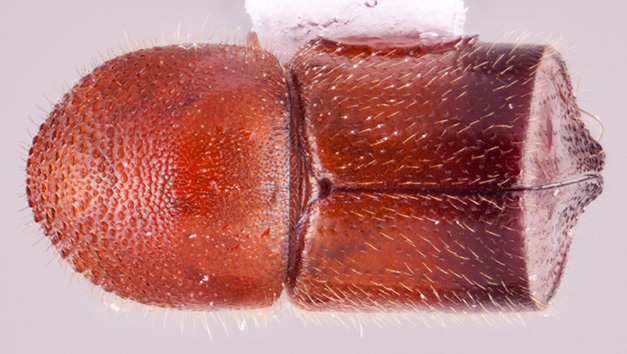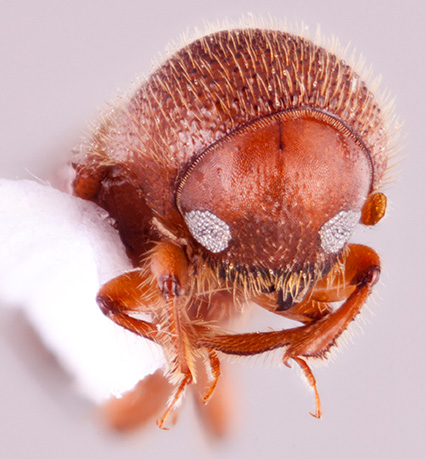Xylosandrus mancus
|
Xylosandrus mancus lateral; R.K. Osborn |
|
Xylosandrus mancus dorsal; R.K. Osborn |
|
Xylosandrus mancus declivity; R.K. Osborn |
|
Xylosandrus mancus frontal; R.K. Osborn |
Taxonomic history
Xyleborus mancus Blandford, 1898: 428.
Apoxyleborus mancus (Blandford): Wood, 1980: 90.
Xylosandrus mancus (Blandford): Wood, 1984: 229.
Synonyms
Xyleborus abruptus Sampson, 1914: 388. Schedl, 1951a: 51.
Xyleborus mancus formosanus Eggers, 1930: 186. Schedl, 1952b: 61.
Diagnosis
3.2−3.6 mm long (mean = 3.46 mm; n = 5); 2.13−2.4 times as long as wide. This species can be distinguished by its large size; upper part of eye smaller than lower part; elytralelytral:
'pertaining to the elytra
discdisc:
the flat central upper surface of any body part (e.g. pronotum and elytra)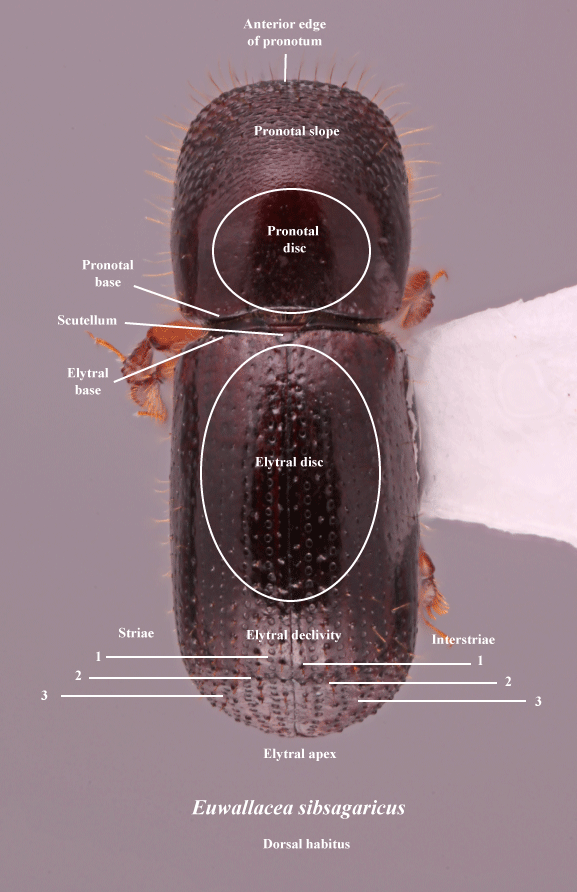 strongly ascending apically, longer than declivitydeclivity:
strongly ascending apically, longer than declivitydeclivity:
downward slope of either the pronotum or elytra
 ; declivitaldeclivital:
; declivitaldeclivital:
pertaining to the elytral declivity
face steep, abruptly separated from discdisc:
the flat central upper surface of any body part (e.g. pronotum and elytra) ; elytraelytron:
; elytraelytron:
'
the two sclerotized forewings of beetles that protect and cover the flight wings
appearing truncatetruncate:
appearing cut off or suddenly shortened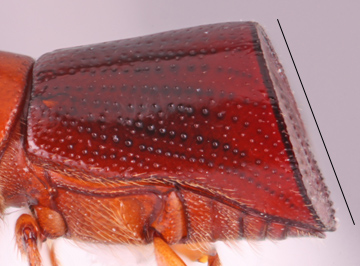 ; posterolateralposterolateral:
; posterolateralposterolateral:
'relating to end of the side part/portion
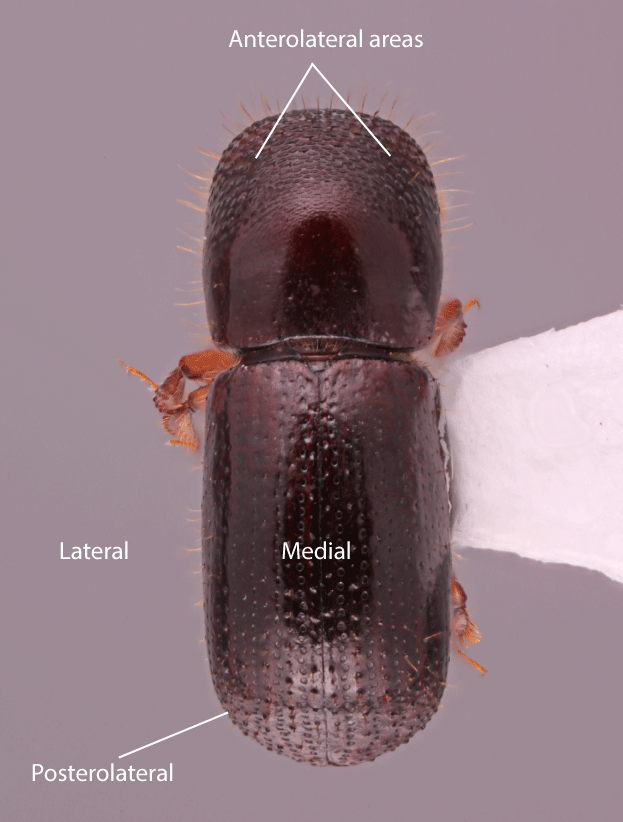 margins of elytraelytron:
margins of elytraelytron:
'
the two sclerotized forewings of beetles that protect and cover the flight wings
carinate to suture forming a circumdeclivital ringcircumdeclivital ring:
a costa that completely encircles the elytral declivity
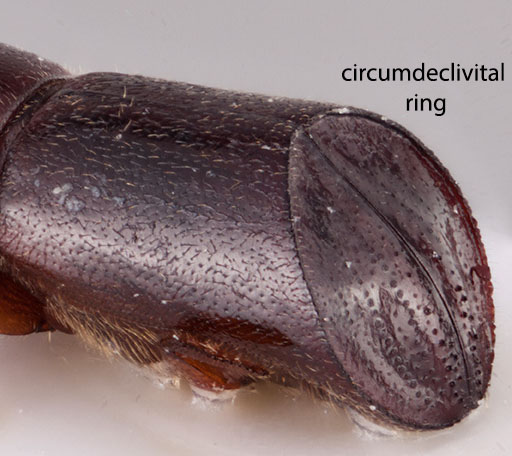 ; declivitaldeclivital:
; declivitaldeclivital:
pertaining to the elytral declivity
face flat, shagreenedshagreened:
covered with a closely-set roughness, like shark skin'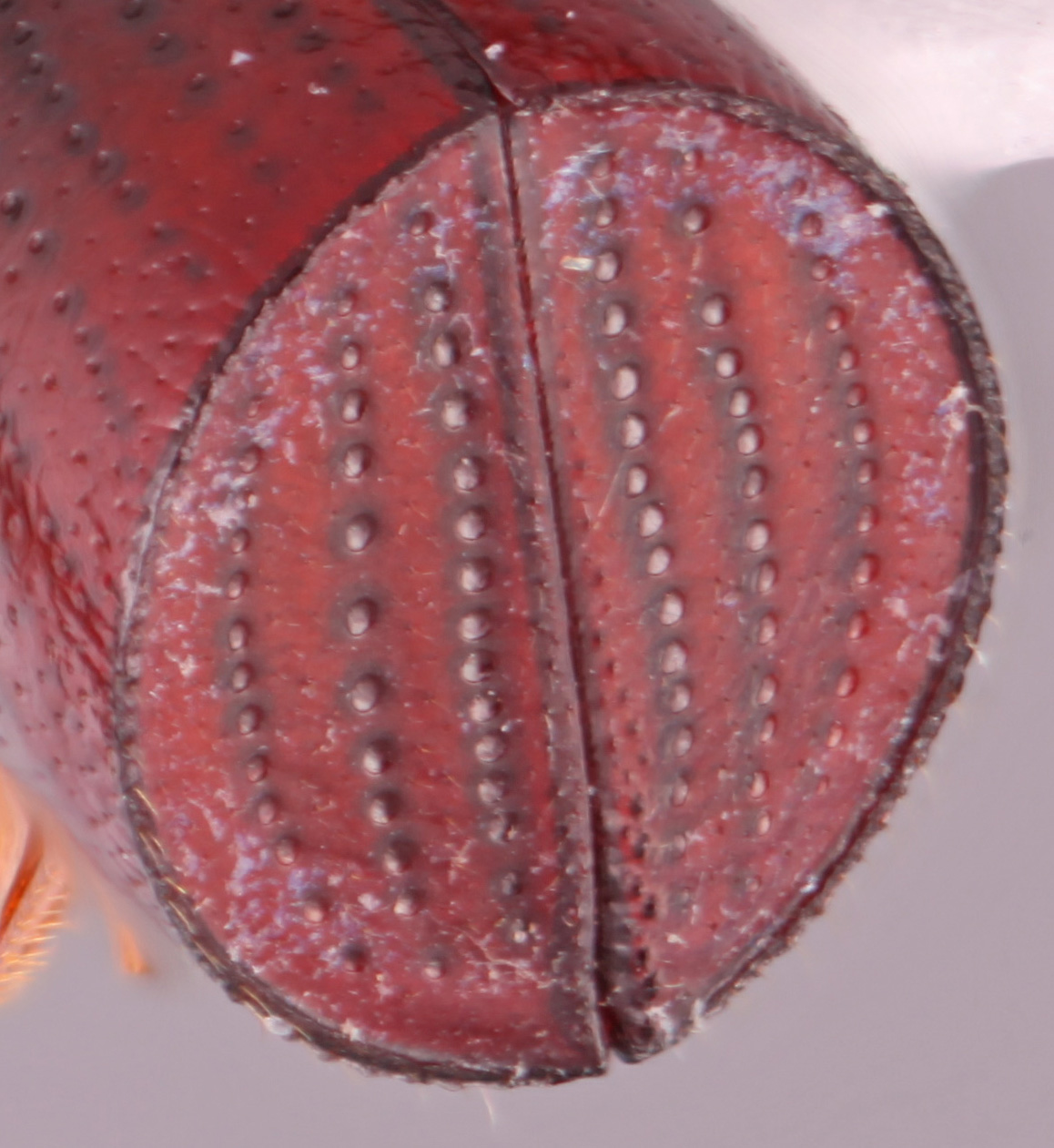 , four punctatepunctate:
, four punctatepunctate:
'set with fine impressed points, appearing as pin pricks
 , glabrousglabrous:
, glabrousglabrous:
'smooth, devoid of vestiture
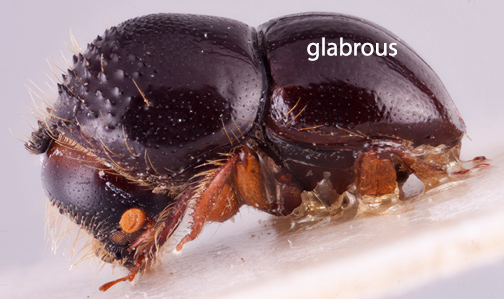 , and somewhat wavy striaestria:
, and somewhat wavy striaestria:
punctures in rows, which may or may not be impressed to make grooves visible; strial punctures large; interstriaeinterstria:
visible; strial punctures large; interstriaeinterstria:
'longitudinal spaces along the elytra between the striae, which is not as<br />
impressed and bear smaller punctures.
 glabrousglabrous:
glabrousglabrous:
'smooth, devoid of vestiture
 , granulategranulate:
, granulategranulate:
'pertaining to a coarse, grainy surface texture'
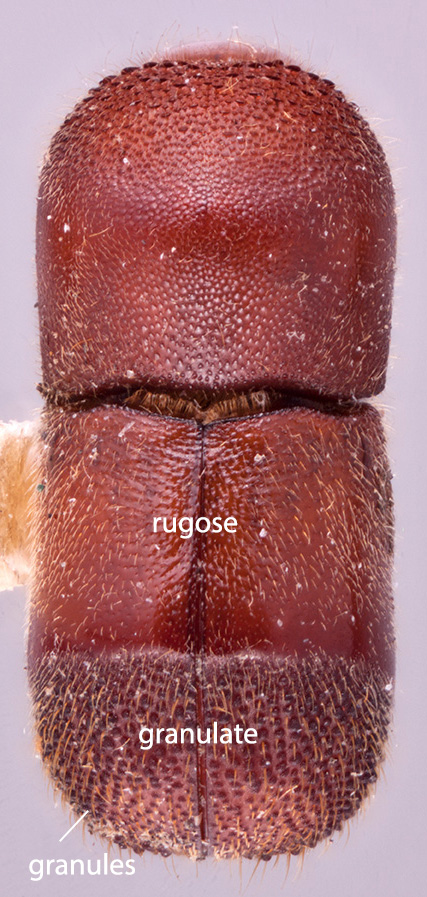 , granulesgranule:
, granulesgranule:
'a small rounded protuberance, like grains of sand
 more abundant near apexapex:
more abundant near apexapex:
point or edge furthest from the body; opposite of base
 (especially between interstriaeinterstria:
(especially between interstriaeinterstria:
'longitudinal spaces along the elytra between the striae, which is not as<br />
impressed and bear smaller punctures.
 1 and 2); posterolateralposterolateral:
1 and 2); posterolateralposterolateral:
'relating to end of the side part/portion
 margin granulategranulate:
margin granulategranulate:
'pertaining to a coarse, grainy surface texture'
 ; pronotumpronotum:
; pronotumpronotum:
'the dorsal surface of the thorax
as long as wide, from dorsaldorsal:
'of or relating to the upper surface; opposite of ventral
 view rounded (type 1) and laterallateral:
view rounded (type 1) and laterallateral:
'pertaining to the side
 view basic (type 0), summitsummit:
view basic (type 0), summitsummit:
highest point, used for pronotum and elytra, denotes the peak between pronotal frontal slope and disc, and between elytral disc and declivity at midpoint, basalbase:
at midpoint, basalbase:
point or edge closest to the body; opposite of apex half shiningshining:
half shiningshining:
appearing glossy or bright in luster; referring to a surface that is polished and reflects light well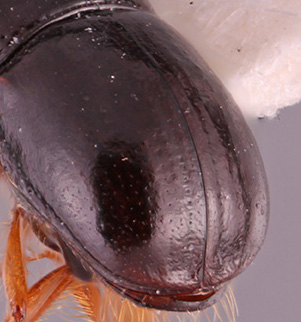 , densely punctatepunctate:
, densely punctatepunctate:
'set with fine impressed points, appearing as pin pricks
 ; and broad, dense mycangial tuftmycangial tuft:
; and broad, dense mycangial tuftmycangial tuft:
'tuft of setae that denotes the mycangia exterior opening
 on the pronotalpronotal:
on the pronotalpronotal:
'pertaining to the pronotum
basebase:
point or edge closest to the body; opposite of apex .
.
May be confused with
Amasa spp., Xylosandrus amputatus, X. bellinsulanus, and X. trunculus
Distribution
Within the study region, recorded from China (Chongqing, Gansu, Hainan, Hong Kong, Xizang, Yunnan), India (Karnataka, Kerala), Laos, Taiwan, Thailand, Vietnam. Outside the region, recorded from East Africa (Tanzania), Indonesia (Java, Sumatra), Madagascar, East & West Malaysia, Mauritius, Philippines, Seychelles, Sri Lanka.
Host plants
polyphagous (Dole and Cognato 2010Dole and Cognato 2010:
Dole SA, Cognato AI, 2010. Revision of Xylosandrus Reitter (Curculionidae: Scolytinae). Proceedings of the California of Science 61: 451-545.)
DNA data
Sequences available for COI and CAD.
COI: GU808716; MN620094; MN620095; MN620096; MN620097; MN620098; MN620099; MN620100
CAD: GU808637; MN620352; MN620353; MN620354; MN620355; MN620356


